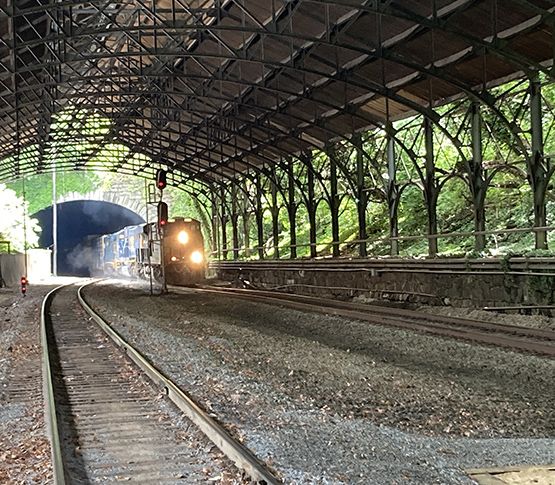Railroad tunnels were blasted, dug, drilled, and supported along thousands of miles of track, coast to coast, border to border during the westward expansion of the 1840s and after. In urban areas, they were designed and constructed to minimize the disruption to local life while allowing passage of freight and passenger trains that were the building blocks for progress.
But like much infrastructure, what was designed for the 1800s and 1900s is often obsolete in the 21st century. Federal government funds have been made available for improving and renovating those structures that can be saved and modernized to accommodate today’s—and tomorrow’s—needs. With logistic support and local government backing, infrastructure work is starting to increase across the country.
But state and local governments have been seeking and getting federal funding for infrastructure projects for decades. Combined with local and private money, projects have been on the books for years, often waiting for environmental reviews and impact statements to be assembled and approved.
For example, in July 2020, Maryland Governor Larry Hogan was able to secure $125 million of federal funds for a project in Baltimore, the Howard Street Tunnel Clearance Program, commonly known as the Howard Street Tunnel Project. However, the state still needed $103 million for the infrastructure improvements that would allow CSX Transportation to double-stack shipping containers in the tunnel to break the rail bottleneck leading to the Port of Baltimore.
The remaining $103 million was acquired through state, private, and other federal agencies. Once completed, the project will provide trains with shipping containers stacked two-high clearance in the tunnel and under bridges between Baltimore and Philadelphia. Work includes tunnel lowering and enlargement across the 1.7 miles of the Howard Street Tunnel to increase the tunnel interior height from 19 to 21-ft.
Built in the 1890s by the Baltimore & Ohio Railroad, a CSX predecessor and the nation’s first common carrier railroad, the Howard Street Tunnel has long been regarded as a limiting factor to growth at the Port of Baltimore. The tunnel runs under the City of Baltimore with a current clearance that is 18-inches less than what is needed to accommodate double stack intermodal containers.
A joint venture between construction firm Skanska and the Fay subsidiary of S&B USA Construction, a specialist in design-build projects, was selected to modernize the historic tunnel, a structure with a 125-year legacy. It holds particular significance by linking the Port of Baltimore’s Seagirt Marine Terminal Intermodal Container Transfer Facility to key markets in the Midwest.
The tunnel is divided into three main sections: a concrete box section, a cut-and-cover section, and a mined tunnel section. This combination presents construction challenges due to the diverse methods used in its original construction. With an emphasis on ensuring the tunnel’s continued use, the Skanska-Fay JV construction will be undertaken while trains are actively using the tracks.
The Skanska-Fay JV’s innovative approach centers on optimizing track profiles and alignments within the existing structure, achieving the prescribed horizontal and vertical clearances. The project is anticipated to be completed in June 2027. In addition to the tunnel project, this final phase of CSX’s initiative to clear its entire intermodal network for double-stack trains will include 10 projects in Baltimore, 10 in Philadelphia, and two in Delaware.
Want to tweet about this article? Use hashtags #construction #sustainability #infrastructure


